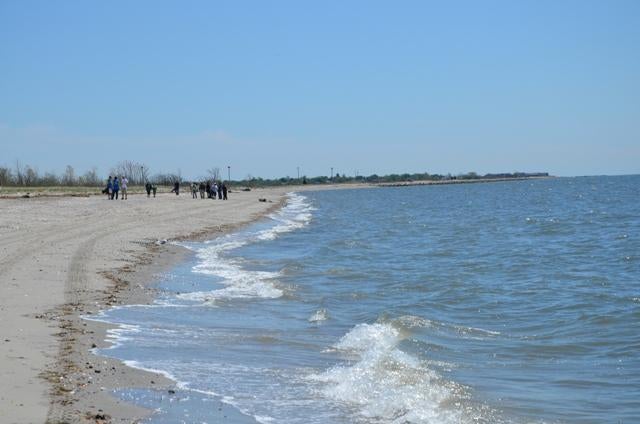According to experts, the northeast should be exposed to exposure to the exposure to disease -free ticks.
The Fordham University’s tick currently shows the risk of nine out of ten, which indicates that people in New York, Connecticut and New Jersey “restrict the exposure and exercise extreme caution”.
“If you think about a hike, you should go to a film instead,” says the Index and finds that both the nymph and adult ticks are active under warmer and humid conditions this time of year.
This year, the threat of several ticks has closed a Connecticut beach for the whole summer.
“We regret everyone that Pleasure Beach remains closed to the public for the 2025 summer season,” wrote the city of Bridgeport on Facebook. “This decision is made after a comprehensive consultation with state converting experts after the discovery of several types of ticks on the island – including the invasive Asian long -horned tick.”

The city government said that it would carry out a number of treatment and contamination efforts throughout the region to reopen the beach next year.
The most common ticks in New York, New Jersey and Connecticut are deer ticks, American dog ticks and Lone Star Ticks. All three are able to transfer diseases to humans, but the professor and entomologist at Rutgers University, Dina Fonseca, previously told before The independent That nympth black ticks are people who really have to worry because they can be infected with four different means of illness.
This includes Lyme Borreliosis, which can lead to facial paralysis and an irregular heartbeat if they are not treated. More than 89,000 cases were reported to the federal authorities in 2023, most of which were in the northeastern countries.
With the size of the poppy seeds, the nymphs can be difficult to recognize. The symptoms can also be difficult to grasp, and according to the centers for the control and prevention of diseases, Lyme is often diagnosed as arthritis, sport -related injury or another common medical illness. People with Lyme can experience fever, chills, headaches, tiredness, muscle pain and other symptoms within three to 30 days after a tick bite. They are often recognizable by the classic “Bull’s Eye” rash, but does not always appear that way. Late symptoms can occur between days and months later.

In order to avoid exposure, people should wear tight clothes, stuck shirts and trouser legs and wear clothes that are treated with 0.5 percent permethrin protection.
“If you do not apply repellent, you can be ruthless,” said Fonseca.
This year New York City-Die Heimat experienced 8.2 million inhabitants-one increase in the number of nymphs with black-legged tick nymphs, Joellen Lampman from New York State Integrated Pest Management program told The Advance/Silive.com.
“Basically, they should be on the hat,” warned Lampman.
“Ticks are so, so, good to hang on their energy and to wait for something to go on his way,” she added.
